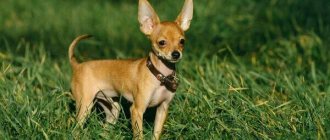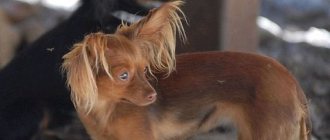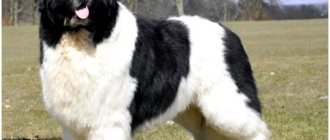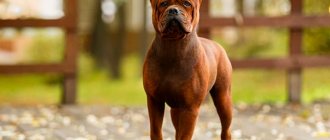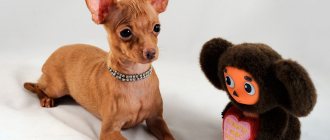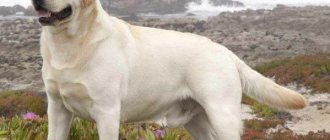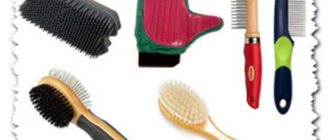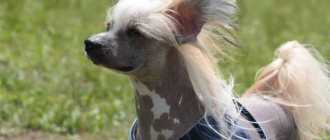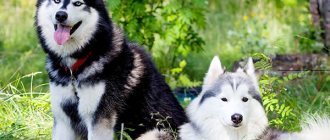Currently, the Yorkshire Terrier breed is considered one of the most fashionable and prestigious in the world. Many modern celebrities are Yorkie owners.
Often, the presence of such a dog with a favorite idol is the reason why people buy a pet of the same breed.
Currently, Yorkshire terriers belonging to the baby face breed are especially popular among breeders and dog lovers.
In the article we will look at the features of these dogs and show their photos.
History of the breed
The Yorkshire Terrier was bred in the north of England - in the counties of Yorkshire and Lancashire. Among his ancestors was the Waterside Terrier, which was described as a small, blue-gray dog with medium-length hair.
At first, Yorkies were neither fashionable nor prestigious - they were kept by peasants who were forbidden to breed large dogs so that they would not hunt for game in the forests owned by English aristocrats. These small grayish-blue terriers were their faithful companions during trips to fairs, and also guarded houses and destroyed harmful rodents.
After the start of industrialization at the end of the 18th century, many English peasants moved to the cities and took their pets with them. Later, it was these dogs that became the ancestors of the Yorkshire terriers.
In those days, people did not care about purebred breeding, and dogs brought from the north of England were crossed with representatives of other similar breeds, including the so-called “Scottish terriers” and a special long-haired variety of the Manchester terrier.
There are also suggestions that Maltese dogs were used modern Yorkshire terriers
NOTE!
Even then, there were many breed types, among which were Yorkies, which today would be classified as the baby face variety.
The fashion for breeding dogs of this type first appeared in America, which is where the name of this breed variety came from. Translated, the name baby face means “child’s face”, and, indeed, with the structure of the head and the expression of the muzzle, such a Yorkie outwardly resembles a child looking at the world with curiosity and attention.
The baby face type is very popular all over the world, including in Russia. Almost every advertisement for the sale of Yorkshire terriers contains a note that the puppies have baby faces.
But in England, which became the ancestor of the Yorkshire Terrier breed, baby faces are not popular; standard Yorkies .
Mini, micro Yorkie
“Maxi”, “middle”, “mini”, “micro” - all these words are often found in advertisements for the sale of puppies, as well as on thematic forums. According to international standards, Yorkshire Terriers are not classified by weight. This very conditional division is found only in Russia or in neighboring countries, and is not official.
Depending on the personal vision of the breed of a particular breeder, the boundaries between classes can be established as follows:
- “Mini” - from 1 kg to 2 kg.
- "Middle" - from 2 to 2.5 kg.
- "Maxi" - from 2.5 kg to 3.2 kg.
Most often, “middle” and “maxi” fall under the standard. In the rest of the world, “mini” and “micro” Yorkies are considered a waste.
Appearance
The main thing that distinguishes baby-face Yorkshire terriers from standard dogs is the special structure of the skull and muzzle.
The head of such Yorkies has a rounded shape, the stop is more pronounced than even that of the standard type, and the muzzle is shortened and wide, the ears are set low - below the forehead line, the eyes are large, round and widely spaced.
Thanks to these external features and the special expression of the eyes - surprised and slightly naive, such a dog resembles a doll.
IMPORTANT!
Baby faces were and remain the same Yorkshire terriers - they have exactly the same character and temperament, and in appearance they are very similar to them.
To be sure that a dog belongs to this type, you need to measure the length of its muzzle and compare it with the length of the head from the tip of the nose to the occipital protuberance. If the percentage ratio turns out to be 1:3, then it really is a baby face. And if the length of the muzzle is related to the length of the head as 1:2, it means that this dog belongs to the standard type of breed.
Evidence that a dog is a baby-face type can also be an upturned nose, low-set ears and widely spaced large and strongly protruding eyes.
Concept
The very name of this variety of Yorkies is translated from English as “baby face”; this is more than noticeable in the photo above. And, it should be noted that these dogs really, in their appearance, resemble a small child who is just beginning to get acquainted with the world around him and therefore his gaze seems surprised and at the same time a little naive.
These Yorkies owe their cute, doll-like appearance to the special, non-standard structure of their skull and shortened muzzle. But precisely because of this external feature, baby faces are not recognized as a standard and are considered a defect in the breed, which, however, does not prevent puppies of this type from being incredibly popular and fashionable all over the world, including in Russia and the CIS countries. In many advertisements, if we are not talking about high-breed, exterior show-class puppies, there is a clarification that the babies sold are certainly baby faces, and it doesn’t matter that this is not always true, since some dishonest sellers simply pass off what they want as real and called baby faces puppies with a standard head structure.
What is their difference from ordinary Yorkies? The fact is that the baby face has a rounded, rather large head with a pronounced transition to a shortened and slightly upturned muzzle. Their eyes are large, protruding, and widely spaced. The ears are the same in shape as those of standard Yorkies - in the shape of an equilateral triangle, but are set significantly lower than those of ordinary dogs of this breed.
Baby faces can be not only standard size, but also mini and even micro.
Character traits
Baby Face is a true Yorkshire Terrier. He is brave, active and agile, despite his small size.
At the same time, like all other terriers, these kids consider themselves “big dogs,” and some males have a cocky and even pugnacious character.
At the same time, baby face Yorkshire terriers are affectionate and affectionate animals with a cheerful, playful disposition. It is not difficult to train them to get along with other animals and with children, but for this puppy to be raised properly from the first days of its arrival in its new home.
Read more detailed information about the character of Yorkies here.
NOTE!
With proper upbringing and training, a Baby Face puppy will grow into an intelligent, friendly, cheerful and playful dog that is not prone to aggression.
Price range
Due to the fact that baby faces do not belong to the standards of the Yorkshire terrier breed, prices for such a puppy are lower than for classic ones.
The cost of babies depends on the subspecies, the availability of documents and other characteristics. A baby without a pedigree can be purchased for 10 thousand rubles, and a puppy with metrics will cost at least 15 thousand rubles. But this is not the limit. Breeders offer pets for 30 thousand, 40 thousand and even 80 thousand rubles* So anyone can choose a sweet friend to suit their taste and budget.
Important! If you want to be sure of the quality of the breed and proper care, you should buy a puppy from a kennel
Accepted Standards
The maximum weight of the dog should not exceed 3.1 kg. The minimum height or weight is not regulated by the standard, and yet too small individuals (mini) are undesirable for breeding, since such animals may have health problems.
The standard describes Yorkshire Terriers as one of the smallest dogs in the world. Despite their small stature, they are proud and majestic animals, with very long, straight hair that flows almost to the ground like a silky cloak of silver-steel with a reddish tan.
The head of the baby face Yorkie is larger than that of the standard type, and much more rounded, but not dome-shaped with a well-defined stop. The muzzle is shortened and rather wide with a slightly upturned bridge of the nose.
Other standard characteristics of baby face Yorkies:
- the nose is medium-sized with pure black pigmentation;
- The teeth are small, located without gaps between them. Scissor bite;
- the eyes are dark, widely spaced and protruding, with a surprised and slightly naive expression typical of this variety;
- the ears are set below the forehead line, triangular;
- the body is square in format, not too long, compact;
- the neck is medium in length, graceful lines and proud posture;
- the withers are weakly defined, the chest is oval;
- the back is quite short, relatively wide and strong;
- the stomach is moderately tucked;
- limbs are straight, with regular joints. The knee and hock joints are weakly expressed;
- paws are large, gathered into a ball. The claws are black, moderately long, curved;
- When walking, the tail is carried above the line of the back and can be either natural length or half docked.
The coat is straight, shiny and silky. On the body it is medium in length, but on the head and muzzle it is very long, flowing down the sides. These dogs have no undercoat at all.
On the head, the Yorkie's coat is colored a rich reddish-brown shade. From the back of the head to the base of the tail, the coat is a steel-blue color, without interspersed with golden-red hairs and without lightening to silver.
Due to the fact that with the only acceptable color after recoloring it is possible to get a lot of non-standard variations of red and gray shades, buying a Yorkie puppy is always a lottery. It is very difficult to predict which of the babies in the litter will grow up to be standard, and which will have a color that is not quite correct.
Expert opinion
Kozhevin Semyon Kirillovich
Expert dog handler.
Baby Face Yorkies are very friendly, playful and cheerful dogs. They play wonderfully with children, and they also have another amazing feature - they know how to adapt to their owners. They are one of the few breeds that are completely non-shedding, making them a breed suitable for many allergy sufferers. These cute babies, looking like toy dogs, cannot leave anyone indifferent: passers-by, seeing Baby Face, are always surprised and touched by the doll-like appearance of this little dog.
Yorkshire Terrier color
The color and quality of the coat is one of the main indicators of compliance with the breed standard. Yorkshire Terrier puppies are born completely black, with several “tan” spots on the face, hind legs, chest and under the tail. Over time, the color begins to change, but it is almost impossible to understand exactly what it will become. Although breeders initially “cull” puppies that were born without the characteristic tan spots. It is not customary to expect that the color of such babies will correspond to the standard.
As a dog gets older, its coat becomes lighter. In a professional environment, the change in color is called recoloring. It starts from the head: golden-bronze takes the place of black or brown fur. The steel color appears more and more on the neck and back. Gradually, no black spots remain on the head at all, and the body acquires a characteristic dark, bluish-steel color. There should be no inclusions of other shades: the wool shimmers only in transitions from dark to light. Recoloration can last quite a long time; Yorkshire terriers usually acquire their “finished” color by two to three years.
The quality of wool also changes. In puppies it can be fluffy, but by adulthood it should become absolutely even throughout the entire body and silky. It is noted that dogs whose color is dominated by light tones usually have better coat quality than dark ones. This does not apply to Yorkshire Terriers and Biewers. Black and white babies were bred in Germany a little over 30 years ago, and the breed standard was approved only in 2007. Their color may be more original: with a transition from golden to black, with a luxurious white chest.
Advantages and disadvantages
Plus: more endearing and doll-like appearance than a standard Yorkie.
Disadvantage: health problems caused by the specific structure of the dog’s skull.
IMPORTANT!
People who want to purchase a baby face should also take into account that the popularity of this breed type has led to an exaggeration of the unusual appearance, which is why animals with the most convex heads and extremely short muzzles are used for breeding.
Goldust
Quite a rare breed, sometimes called “white gold”. The dog's coat combines white-chocolate-golden color. The very unusual appearance of the dog attracts quite a lot of people, and some say with confidence that this is the most beautiful Yorkie in the world. That is why the dog is gradually gaining its popularity. Although acquiring such a miracle is not so easy, because in order to breed offspring, both parents of the same color are needed.
Goldust has a very friendly, playful and playful character. The baby's weight is no more than 5 kg, and his height is 20-25 centimeters. Like all long-haired animals, the puppy requires special care. For example, it is recommended to use special shampoos to wash it, although the fur itself is combed quite easily and does not tangle.
What is the difference from a standard Yorkie?
If you put a standard Yorkie and a baby face side by side, the differences between these two animals, similar in color and build, will become more than obvious:
- The standard Yorkie has a small head with a flattened skull, while the baby face has a rather large, rounded head;
- in the standard variety the muzzle is quite long and narrow, while in the baby face it is greatly shortened and quite wide;
- The ears of a standard Yorkshire dog are set quite high, while the ears of a baby face are located below the line of the forehead;
- The eyes of ordinary Yorkies are medium in size, not protruding, and their gaze expresses intelligence and alertness. Baby faces have large, protruding and widely spaced eyes, so that their gaze seems surprised and naive.
Stages of growing up by month
The growth of a puppy can be tracked by months. Gradually it will be noticeable how the baby develops and grows. How many months do Yorkies grow and when do they become adults?
Newborns
Chihuahua weight by month and week: table
Puppies are born blind and deaf. They practically do not move, spend more time sleeping, and eat the rest of the time. Newborn Yorkies are highly dependent on their mother: she feeds them, licks them, and they bask next to her.
Important! It is not recommended to pick up such babies; it stresses out the mother dog. It is better to wait until the puppies begin to move independently, see and hear.
1 month
Newborn Yorkie puppies have their tails docked; when they are 1 month old, the wounds heal. During the first two weeks, the puppies' eyes open and their hearing gradually normalizes. At one month old, babies become very curious, so they need to ensure safety throughout the house.
At the age of 4 weeks, the Yorkshire Terrier gains weight very quickly and becomes almost 3 times larger. The baby is already walking and sometimes tries to run. During this period, you can begin to accustom the dog to new food, gradually moving it away from its mother.
Newborn babies cannot see or hear
2 month
At this time, separation from the mother occurs. The babies become independent and can be given to another owner. Puppies learn quickly, it is important to explain to them many rules of behavior and begin training. Misdeeds are easily punished, successes are rewarded.
Note! At 2 months, babies are already comfortable eating solid food. The new owner must carefully transfer him to a diet that will be followed constantly.
From 3 to 6 months
At this time, the puppy is actively developing: he gets to know the world, communicates with people and other animals. It is important to pay him more attention, train him, and communicate. From the third month, babies' ears begin to rise. This can happen in a variety of ways, so don't worry if your ears remain floppy for a long time.
From the age of 4 months, dogs begin to replace their milk teeth with permanent ones. The process is quite unpleasant, so babies may be nervous, not eat and have trouble sleeping.
From six months to 9 months
The puppy becomes a teenager. At this time, the dog’s character may deteriorate, it begins to be more mischievous and stubborn. However, patience and attention should be exercised so as not to frighten the animal or lose trust. You need to show dissatisfaction, but very carefully.
For your information! Bitches go into their first heat during this period. If further breeding is not planned, then the dog must be sterilized to avoid the further development of serious diseases.
Newborn puppies are very dependent on their mother
9 to 12 months
How old do Yorkies grow? The baby turns into an adult dog closer to one year. It stops growing rapidly, and its mass does not increase either. The dog needs to be switched to adult food and the optimal diet must be selected.
Old age for Yorkies is counted from 8 years, but the animal's life expectancy is approximately 12 years. At this time, it is recommended to change the food and, if necessary, the conditions for keeping the pet.
Life expectancy and health
Yorkies are one of the longest-living dog breeds, their lifespan is 14-16 years. But this, as a rule, concerns the standard variety, and from those lines where breeders pay great attention not only to the exterior, but also to the health of their pets.
Some of the most common health problems affecting all Yorkies include:
- ear diseases, usually associated with hypothermia or poor quality care;
- oral diseases;
- improper growth of teeth during their change;
- diseases of the gastrointestinal tract;
- pancreatic diseases;
- diseases of the musculoskeletal system and injuries caused by falling from a height or unsuccessful jumps;
- hydrocephalus;
- obesity.
In addition to diseases common to all Yorkies, baby faces may also have specific problems such as chronic conjunctivitis and frequent injuries to the eyeball, early loss of teeth, snoring and grunting.
After
During the week after birth, you need to give your pet 1 tsp 2-3 times a day. milk with calcium. You should not feed your Yorkie meat; it can cause eclampsia, a severe form of toxicosis.
It is better to feed a lactating bitch with high-calorie ready-made industrial food.
You can bathe your dog only 7 days after birth; before that, only wiping with a damp towel is allowed.
What care is required?
Baby face will be able to take root perfectly both in a small apartment and in a large country house. The Yorkie is very convenient for keeping in an apartment because it has no undercoat and does not shed.
His coat needs to be brushed daily. Frequent bathing with the help of special products that help keep the dog's coat smooth and silky, as well as the need to curl long hair into curlers, makes caring for a baby face a difficult task.
If the pet does not participate in exhibitions, then it is better to cut it short . This will make grooming much easier.
The baby face also needs regular nail trimming and cleaning of the ears and eyes. But these procedures should be done only when necessary. At least once every six months, the dog’s teeth should be cleaned in a clinic to remove tartar, and in case of any problems, they should also be treated.
Yorkies are one of those breeds for which clothing is not just a beautiful and fashionable accessory, but an urgent necessity, since due to the lack of undercoat, these animals are very cold and often catch colds.
Read more about caring for your Yorkie here.
Chocolate
Long-haired type, which got its name due to its unusual color. This baby's face is medium in size and has walnut-colored eyes. The shade of a chocolate Yorkie can range from milk chocolate to dark chocolate. All this gives it unprecedented refined outlines and charm.
What and how to feed?
The most suitable feeding option would be dry food of super-premium class and higher. With ready-made food, it is easier to calculate the portion, and in good food, all nutrients are selected in proportions that best suit the dog’s needs.
It is best to feed baby faces with food designed specifically for Yorkshire terriers. Many companies produce lines of food designed for representatives of this breed, taking into account their age, physical activity and health status.
Russian salon
The newest modification, produced in Russia. The coat color of dogs is usually reddish, but there are cases when there are babies with white and black spots on their paws. The thick coat has an undercoat, but in winter the puppy still needs clothes and shoes.
What type of Yorkie do you like best?
How to choose a puppy?
Despite the fact that baby face is not considered a standard type of breed, it is still better to buy such a puppy with documents - from a nursery or from a breeder. In this case, the owner can be sure that he has a Yorkie and not a mixed breed.
When you arrive to pick up your future pet, you need to make sure that the dogs are kept in proper conditions and that they look healthy and well-groomed.
How to choose the baby face in the litter? You need to look at all the puppies - the difference between baby faces and standards is already clearly visible at this age. Also, to be on the safe side, it is recommended to take mental measurements of the length of the muzzle and compare it with the total length of the head.
The puppy should look cheerful, playful and active, but in no case aggressive or, on the contrary, intimidated. A healthy baby has clear eyes, a clean nose and ears, a silky shiny coat without bald spots, dandruff or external parasites, as well as healthy skin without redness, wounds or inflammation.
CAREFULLY!
Yorkshire Terriers should not be sold before three months of age. An earlier sale of the litter should alert the future owner.
Small dogs
Super mini or dwarf Yorkshire terriers have the smallest weight from a kilogram to a kilogram of five hundred grams. Such dogs are also called pocket or cup dogs because they easily fit into handbags, pockets and bowls.
Those who have decided to purchase a super mini Yorkshire Terrier should immediately understand that they are a lot of trouble. Let's look at exactly what problems await owners of super mini dogs.
Firstly, if there is a small child in the family, then during his play the super mini Yorkshire terrier can expect various injuries, even death.
Secondly, miniature Yorkshire terriers can injure themselves. They must be constantly monitored so that they do not fall from the bed or chair. If you leave your pet there and forget about it, then when the pet jumps, it can damage its head or paws.
Thirdly, you will have to move carefully around the house - a small dog may not be immediately noticed and you may accidentally step on it or get pinched by a door.
Fourthly, super mini Yorkshire terrier females are not suitable for breeding. Because of their tiny size, they will not be able to bear, much less give birth to, offspring on their own. Therefore, you will have to either constantly keep the bitch away from male dogs during heat, or have her spayed.
Fifthly, super mini representatives of this breed may have problems in physical development. For example, an open fontanel or the absence of some teeth.
It is also worth focusing on the fact that the average life expectancy of a super mini Yorkshire terrier is seven to nine years. Whereas standard representatives of this breed can live up to sixteen years, and sometimes more
Beware, scammers
Some breeders may offer to purchase a so-called micro Yorkshire terrier. But micro dogs are a breeding match. Such animals weigh less than a kilogram, have a round head that is huge for their height and overly bulging eyes.
Micro Yorkshire Terriers suffer from dwarfism and often suffer from nervous system disorders. This is not the entire list of diseases that these super tiny creatures can suffer from.
Due to poor health, Micro Yorkshire Terriers live very short lives. Even if you try to extend their life, it will take a lot of time, effort and money.
Any owner should be on guard not to run into such unscrupulous breeders and their low-quality offers.
Which dogs do you prefer and why? Leave your comments, your opinion is very important to us.
Possible complications
The birth of a Yorkshire Terrier most often occurs without complications. Problems arise if the bitch has a narrow pelvis and is unable to give birth on her own. In this case, a caesarean section is required. A sign of the need for surgery is a dirty gray discharge that appears shortly before birth. It is also important to ensure that during birth all the placenta comes out - their number should be equal to the number of puppies. Placences that do not come out during childbirth may come out within 24 hours afterward; if this does not happen, the dog must be shown to a veterinarian.
Similar signs
By the dog's behavior before giving birth, you can determine when it will start giving birth.
- 4 - 5 days before giving birth, the dog experiences a slight sagging of the back caused by prolapse of the uterus.
- Also, the imminent birth can be judged by rapid breathing and a decrease in body temperature.
- Some individuals begin to get nervous 7-10 days before giving birth and refuse to eat, others, on the contrary, eat more, behave as actively as possible, and like to take long walks.
- Before giving birth, the bitch behaves restlessly, looking for a quiet and secluded place where she will be comfortable giving birth and feeding puppies.
The dog should not be allowed to hide - the birth should take place in full view of the owners so that they have the opportunity to help the puppy or bitch.


